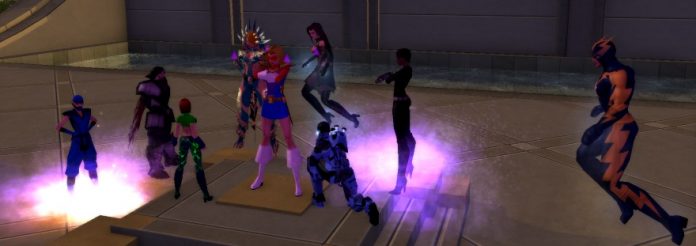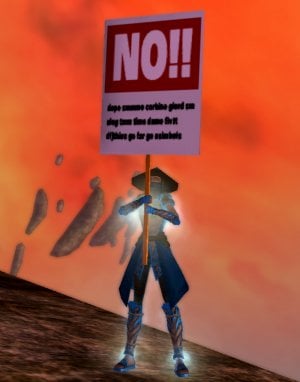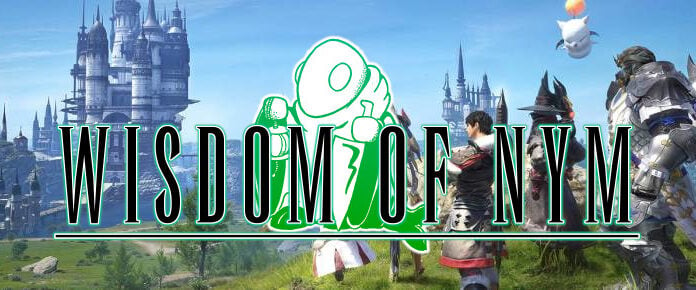
What’s amazing about the unexpected City of Heroes revival (and does that ever feel good to type) isn’t just that old players are eager to go back, but that new players are seeking out the game. Sure, that’s not precisely stunning when the game has had years for fans to say how great it was and what a shame that it died, but it’s still pretty great to see. Unfortunately, it also means a certain degree of information over time has been lost, and that means some questions just do not have clear answers.
For example, the question of what Archetype you’ll actually enjoy playing.
We had this come up at work the other day, and while I am admittedly a bit rusty in the game I still remember the lineup of the game pretty well. Even with the addition of a new option, in fact! So if you’re unsure of which Archetype to pick, or just want to have a few giggles at familiar jokes, here’s the guide for you.
Blaster
Are you compelled to shoot? That’s kind of the Blaster’s whole thing, you see. Blasters are the heroic archetype best suited to ranged attacks with melee secondaries, with the ability to keep hitting things through control effects and a stacking damage boost as they keep pouring on the damage.
Advantages: Blasters hurt. Seriously, if you want to deal a lot of damage, even the more control-oriented powersets available to Blasters tend to do a lot of damage. (Yes, powerset matters; most powers have some sort of debuff attached to them, which means that you can make your debuff-styled powers more focused on controlling things.) You also have a tendency to hurt things at every range, which is nice.
Disadvantages: The first downside is that the melee and ranged powers never really help each other that much; you get some useful defensive options and buffs in your secondary, but you do have a distinct split between modes. The second is… well, you’re a glass cannon and tend to go down with one solid punch to the jaw. If you dislike “kill it before it kills me” as a playstyle, you’ll be miserable.

Controller
At launch, Controllers were considered a bit of a pet class, but these days they’re more like a pseudo-pet class because, well, Masterminds exist. But regardless, Controllers combine their control sets (which disable targets) with their secondary support sets (which debuff enemies and buff or heal allies), along with a pet skill or two to bring out their personal minions of plants or stone or illusions.
Advantages: Like the Fall Out Boy song, you can be immortal. Nothing can move or attack you or breathe, and then you debuff it further with your secondaries, and then your pet kills it. You even hurt things more that you have locked down, which makes the whole thing even more support-oriented
Disadvantages: Hey, did you notice all the talk about damage dealt in there? No? That’s because you don’t deal much of it at all. You have an aura of absolute safety and then get to slowly plink away with the equivalent of thrown pebbles until the dang thing dies. It’s a great archetype if you want to pull everything, lock it all down, and then go make a sandwich while your pet slowly mops up, but “active” it is not.
Defender
This is not the healer archetype, but then again it sort of is. Unlike the many other support-sporting archetypes, Defenders even get an inherent power to make supporting a team easier as it gets weaker, and its healing and debuffing is the primary focus. On the other hand, hard heals aren’t as much of a thing in CoH; most of the time debuffing things into weakness and then throwing in ranged damage is your real goal.
Advantages: While you aren’t quite immortal, you do actually have a lot of defensive tricks, you’re useful in a group, and you have ranged damage to ensure that you can actually kill things. A lot of the Defender powersets are also really fun from a party support standpoint, since you’re not just pouring health into an ever-emptying bucket.
Disadvantages: It’s clear that Defenders are much more oriented toward party play than solo play (even if you do deal more damage alone!), and a lot of the fun stuff that they can do is also done by the more damage-oriented Corruptor without the party focus. You also do tend to be kind of fragile, even though your powers offer you ways of mitigating that fragility.

Scrapper
Be the best there is at what you do, bub. Scrappers are melee dervishes, focused on dealing a whole mess of damage while right in the thick of combat; they’re also capable off-tanks in group situations, with a suite of different powers that make them pretty survivable even on their own. There’s no other Archetype with the ability to land critical hits, either!
Advantages: If you want to play solo but want a more active playstyle instead of “I’ve pulled it all, now to make that sandwich,” Scrappers are your guys and gals. They’re right in the middle of surviving on the melee spectrum, and they’ve got high sustained damage with lots of defensive options as well.
Disadvantages: That “middle-of-the-road” approach is the biggest weakness of Scrappers, too; they lack the kinetic potency of Brutes, the defenses of Tankers, and the burst potential of Stalkers. You also have very little in the way of ranged attacks by default, so you can’t even plink at more distant targets.
Tanker
Gee, what do you think these folks do? They sit there and don’t get hurt, usually at the front of the party. That’s sort of their gimmick, hence the name. With defensive powers as their primary sets, Tankers are hard to kill but also capable of laying a solid beatdown on enemies that they’ve pulled.
Advantages: In a good party, nothing survives like a Tanker does, and you aren’t exactly there to just take licks because you can deliver quite a kicking along the way. You also have the easiest time holding everything in big pulls, as even your single-target attacks provoke enemies around you, which can make you desirable for rounding up large groups of mobs for your party to pick on.
Disadvantages: Here’s the thing… all that stuff I just wrote about holding threat? Nobody cares. The nature of big groups in CoH means that Tankers, Scrappers, and Brutes are all largely interchangeable as tanks, and once the party gets rolling, you will mostly watch tons of things go off and everyone will be healed and buffed to all hell even if you don’t hold threat. So in this late-stage version of City of Heroes, you might find yourself kind of left wondering why you’re playing this instead of just another Brute.
Warshade/Peacebringer
 Oh, who cares. Seriously, no one rolls one of these unless you specifically want to suck because they’re just not good and you only have one set of powers anyhow.
Oh, who cares. Seriously, no one rolls one of these unless you specifically want to suck because they’re just not good and you only have one set of powers anyhow.
Advantages: On paper, these archetypes have a bunch! For one thing, you get more powerful based on the archetypes of other players in your party. You have two shapeshift forms, one of which allows you access to powerful ranged attacks and the other one turns you into a super-dense pocket tank. Your powers have a wide spread of different effects. What could go wrong?
Disadvantages: Oh, right, you take too much damage, your shapeshifted forms still need separate enhancements for their powers which force you to specialize pretty narrowly anyhow, you absolutely suck on your own because of that scaling buff thing, and you’re stupid and no one likes you. The only reason you play one of these is because you actually want to play the Garbage Archetypes. (Maybe the player devs on these rogue servers could make these characters worth playing…)
Sentinel
Hey, here’s one I haven’t actually played around with! Because it’s new with the player-built i25, you see; the whole point of Sentinel is that the nature of this game lends itself to new archetypes combining existing sets, like this one combining defensive powers and ranged attacks. Fortunately, the nature of the game means it’s also pretty easy to understand it!
Advantages: You can shoot everything from range, and when things actually reach you, your options aren’t limited to healing yourself or applying holds or being a Blaster who just says “lol” and then dies. You actually just get to stand back and keep shooting. It’s like a revolution in gameplay!
Disadvantages: Oh, wait, it’s also… a little boring? Like, don’t get me wrong, it works, but you have to specifically choose the right sets if you want your secondary to be doing much beyond keeping you alive here. There’s no control effects or team buffs or whatever, and unless you spec yourself well, in parties you are functionally a Blaster with no melee. That’s fine as far as it goes, but it does not exactly light anyone on fire.
…all right, Blasters literally light people on fire, but you understand the meaning.
Redside coming in the next edition! Yes, technically, in i25 you can roll originally heroic archetypes as villains and vice versa, but work with us on the theme here.
 It’s a bird, it’s a plane, it’s Eliot Lefebvre and Justin Olivetti covering superhero MMORPGs, past, present, and future! Come along on patrol as Into the Super-verse avenges the night and saves the world… one column at a time.
It’s a bird, it’s a plane, it’s Eliot Lefebvre and Justin Olivetti covering superhero MMORPGs, past, present, and future! Come along on patrol as Into the Super-verse avenges the night and saves the world… one column at a time.














